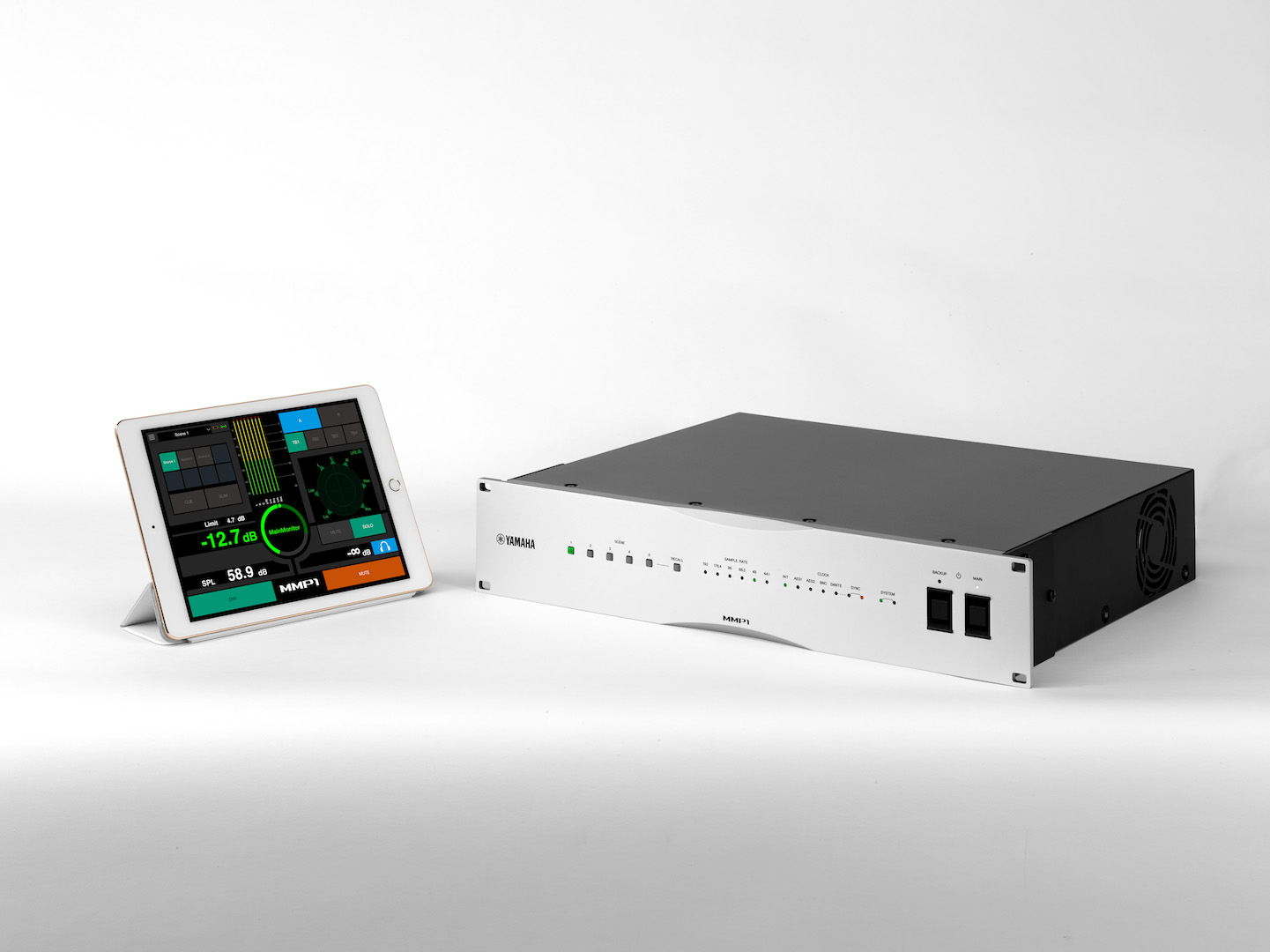IBC 2017: Yamaha releases MMP1 Studio Monitor Management System
Yamaha is releasing the MMP1 Studio Monitor Management System. With advanced audio routing capabilities and DSP features that are ideally suited to configure and manage monitor environments from stereo up to immersive audio configurations, the MMP1 will play a major role in music and post-production studios around the globe.

Yamaha MMP1 w iPad
Monitoring is a vital element in the production environment as it directly affects the quality of the final product. The advent of immersive audio formats has raised the bar higher than ever, increasing the need for precise sound field reproduction. While the migration to efficient DAW-based in-the-box production systems are gaining traction, the Yamaha MMP1 easily accommodates up-to-date management methods with accuracy.
The Yamaha MMP1 offers the flexibility to manage the diversity and complexity of state-of-the-art studio monitor configurations and communication needs, providing a solution that delivers superior monitoring and functionality in the most efficient way.
The heart of the MMP1 is a 40 x 36 Monitor Matrix to monitor source mixing that supports formats from Stereo to Immersive audio, including Dolby Atmos, Auro3D and NHK 22.2. Also, eight cue outputs and 2 talkback systems between the control room and booth allow easy communication between multiple artists and directors. Additional features such as cough mute, cough mute override, and studio speaker auto-mute are also provided enabling microphones to be muted from external controllers via GPI and GPO, with current status monitoring available via the MMP1 Editor software or iPad App.
“The Yamaha MMP1 offers production facilities the high quality monitoring control solution in a streamlined design with stunning audio quality needed to deliver great mixes, no matter the format.” says Nithin Cherian, PA product marketing manager, Professional Audio division, Yamaha Corporation of America.
A 32 x 32 speaker management matrix with crossover filters for bass management on all channels follows the monitor matrix, allowing greater freedom and flexibility rather than just providing a limited selection of preset patterns. Both Finite (FIR) and Infinite (IIR) filters are provided for precise bass management and to maintain flat phase response characteristics between channels for optimum sonic clarity and imaging. Time alignment delay and EQ are also included in the new MMP1 for speaker output control. The system provides 32 inputs + 8 DSP channel inputs x 32 outputs + stereo downmix outputs + stereo headphone outputs @ 44.1, 48, 88.2 and 96 kHz and can be configured as 20 x 20 channels @ 176.4 kHz and 192 kHz, as 32 x 32 channels @ 44.1, 48, 88.2, and 96 kHz, or as 16 x 16 channels @ 176.4 kHz and 192 kHz.
The Yamaha MMP1 includes eight channel strips that support a wide range of applications. Each is equipped with four selectable EQ types: Precise, Aggressive, Smooth, and Legacy offering a comprehensive range of response shaping options, plus a number of analog vintage effects modeled at the component level using acclaimed Yamaha VCM (Virtual Circuit Modeling) offering professional grade processing accuracy.
In addition to the 8 analog and 16 AES/EBU (via 25-pin D-Sub) inputs and outputs, the MMP1 also features 64 channels of Dante I/O audio networking capabilities. The new unit also brings together high performance AD/DA converters that support sampling rates of up to 192 kHz, a sonic design that realizes the quality and accuracy production engineers demand. It also provides advanced audio networking for extended system scalability.
Powerful matrix mixers, functionality, flexible signal routing, and stunning sonic quality provided by the Yamaha MMP1 make it easy to set up ideal monitoring environments for a diverse range of applications.
The Yamaha MMP1 is scheduled for release in November.
